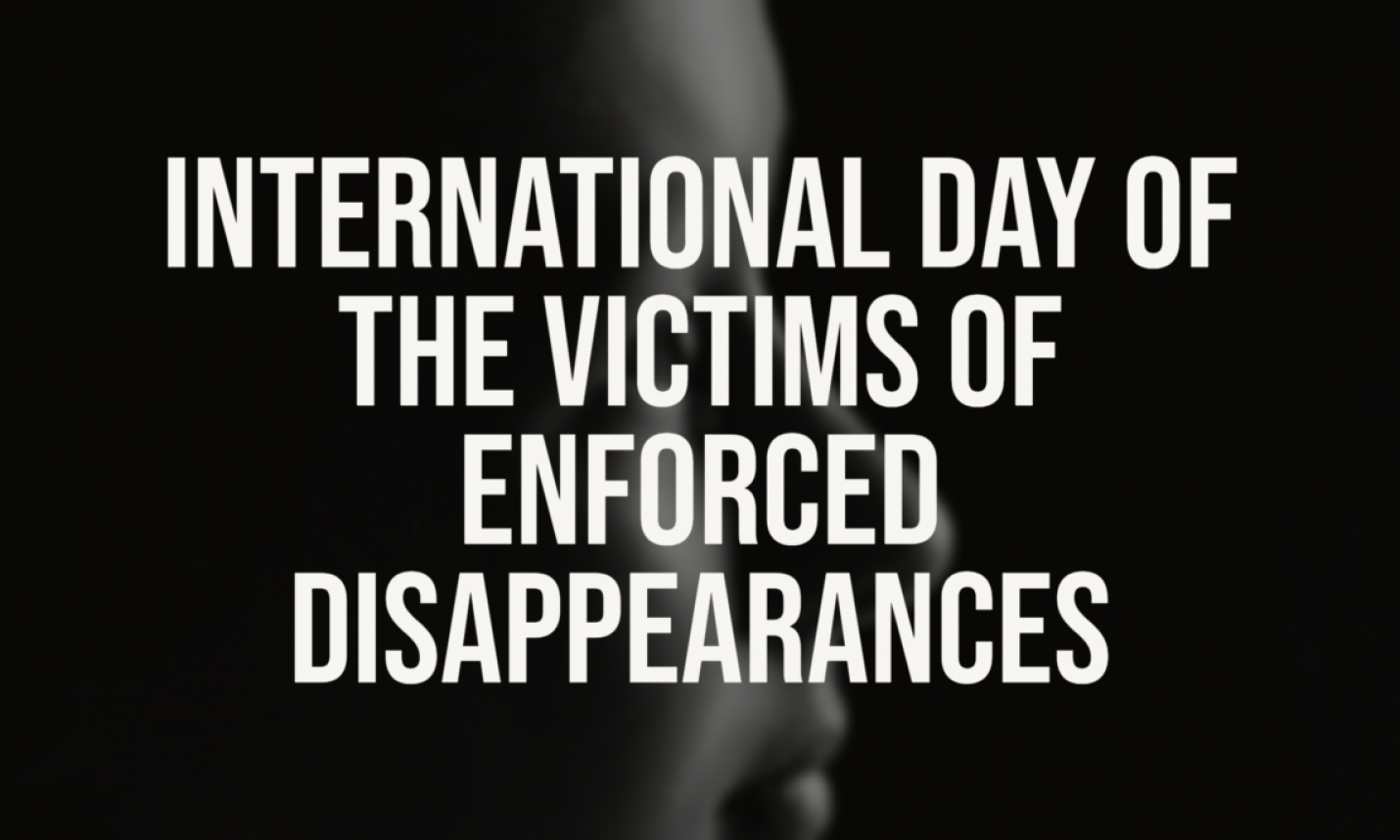By: Gloriose Ntirenganya
The International Day of the Victims of Enforced Disappearances is observed every year on 30 August. This day was established by the United Nations to raise awareness of the crime of enforced disappearance and to honor the victims and their families. It serves as a reminder of the need to seek justice for the victims and to urge governments to take action to prevent such occurrences worldwide.
Enforced disappearance is a tactic used to spread fear and uncertainty throughout society. Its impact is not only felt by the families of the disappeared but also by their communities. Over time, enforced disappearance has become a global issue affecting people in various parts of the world. Vulnerable groups are particularly at risk of becoming victims.
The Origins of the International Day of the Victims of Enforced Disappearances
This day was inspired by the Latin American Federation of Associations for Relatives of Detained-Disappeared (FEDEFAM), a non-governmental organization founded in Costa Rica in 1981. FEDEFAM was formed in response to the widespread imprisonment, forced disappearances, and abductions occurring in several Latin American countries.
Who Are the Victims of Enforced Disappearance?
Victims of enforced disappearance are individuals who have literally disappeared from their families and communities. They are often abducted by state officials from their homes or from the streets, with the authorities either denying the act or refusing to disclose the victim's whereabouts.
What Causes Enforced Disappearances?
People may disappear during their journeys or in the countries of their destination. Enforced disappearances can result from abductions for political reasons, occur during detention or deportation processes, or be the consequence of smuggling or trafficking.
What Is the Meaning of Enforced Disappearances?
According to the Declaration on the Protection of All Persons from Enforced Disappearance, established by General Assembly resolution 47/133 on 18 December 1992, enforced disappearance is characterized by the following elements:
- Individuals are arrested, detained, or abducted against their will by state officials, organized groups, or private individuals acting with the support or consent of the government.
• There is a deliberate refusal to reveal the fate or whereabouts of the individuals, or to acknowledge their deprivation of liberty, which excludes the individuals from legal protection.
Enforced disappearance has often been used as a strategy to spread terror within society. The insecurity it generates affects not only the immediate relatives of the disappeared but also entire communities. Originally associated with military dictatorships, enforced disappearances have become a global problem, particularly in situations of international conflict, where they are used as a tool of political repression.
Key Issues of Concern
• Ongoing Harassment: Human rights defenders, relatives of victims, witnesses, and legal counsel working on cases of enforced disappearances are often harassed.
• Counter-Terrorism Misuse: Some states misuse counter-terrorism activities as an excuse to breach their obligations to prevent enforced disappearances.
• Widespread Impunity: Many perpetrators of enforced disappearances still enjoy impunity, and justice for victims remains elusive.
Who Is Most Vulnerable?
Certain groups are especially vulnerable to enforced disappearances, including human rights defenders, lawyers, children, and people with disabilities. These individuals are often targeted because of their work or their vulnerability. Witnesses are also frequently harassed, intimidated, or even disappeared themselves. The practice is used by perpetrators to instill fear and maintain control over society.
The Impact on Families and Communities
Enforced disappearances cause immense suffering for both the victims and their families. The uncertainty surrounding a loved one’s fate can be devastating, affecting the family’s emotional, psychological, and financial well-being. Communities also experience the fear and disruption brought on by such disappearances, which leads to widespread insecurity and instability.
Raising Awareness on 30 August 2024
Each year on 30 August, the United Nations and Amnesty International join forces to raise awareness about the victims of enforced disappearances. This day serves as a global call to action, highlighting the serious nature of the issue and its far-reaching impacts. Many activists use this occasion to share the stories of missing friends and relatives, often through media and public events. These stories reveal the profound effects that enforced disappearances have on individuals and their communities.
Get Involved
• Join Amnesty International: Become a member of Amnesty International to support their efforts to raise awareness and advocate for justice. Visit their website for details on how to register and get involved.
• Educate Yourself: Learn about the history and consequences of enforced disappearances. Educating yourself and others can help raise awareness and inspire action.
Why This Day Matters
• It Raises Awareness: This day brings attention to the suffering of people who are arbitrarily arrested, detained, or kidnapped, shedding light on the ongoing global practice and its societal implications.
• It Supports Families: The day helps establish a support network for families dealing with the uncertainty of a loved one’s disappearance. Personal stories are shared, offering some level of consolation.
The United Nations and Enforced Disappearances
The International Convention for the Protection of All Persons from Enforced Disappearances, adopted by the United Nations in 2006, establishes an obligation for states to make enforced disappearances a criminal offense, punishable by appropriate penalties that take into account the severity of the crime.
Sources:






